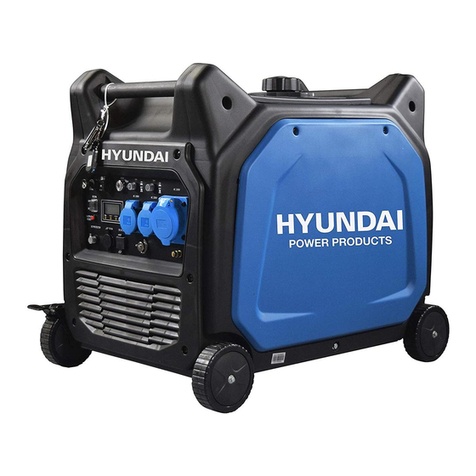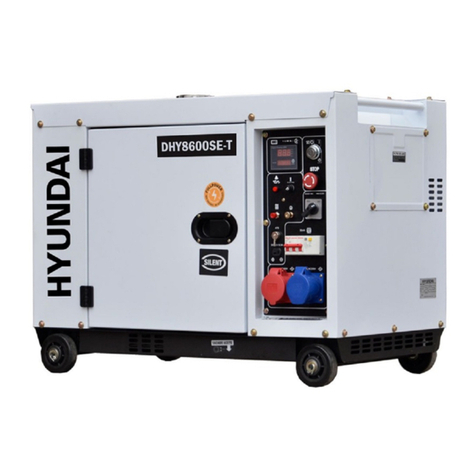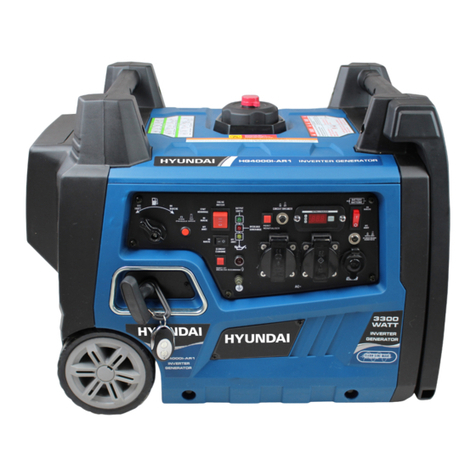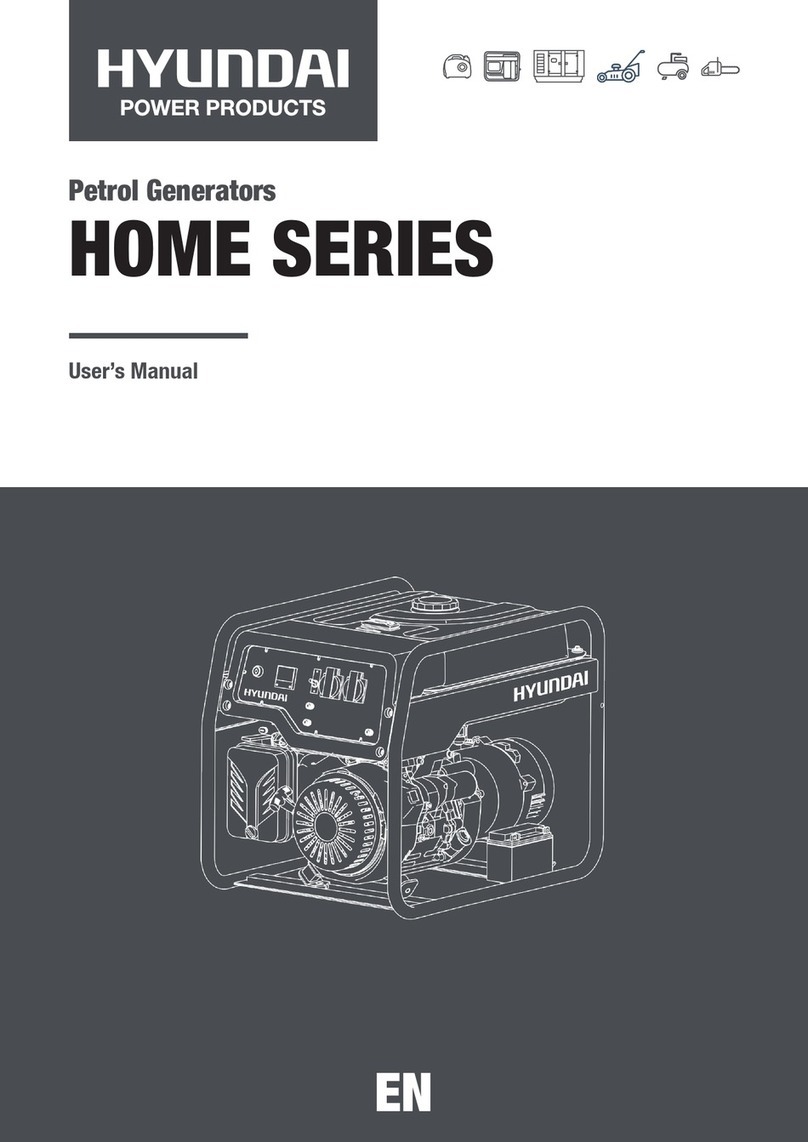
Run the generator in respect of the power indicated in the user’s manual. Do not run the generator
with an overload or at excessive speed.
The silencer of the generator becomes extremely hot when the motor runs or even for a time after it
has stopped. Do not touch it as it will burn you.
Do not transport or move the generator until it has cooled down.
Perform periodic maintenance and resolve problems that appear immediately. Do not run the
generator before correcting any fault detected.
The generator uses a system of air-cooling, and it is necessary to clean its components regularly,
including the grilles, the cover of the fan and the fan itself so as to ensure cooling.
Keep the fuel filter clean, and change the oil of the motor regularly.
Periodically check the installation of the connections and the tightness of the fixations, re-tightening
them if necessary.
Clean the components of the air filter periodically, and replace the air filter when necessary.
Remove any electrical equipment that is plugged in before starting or stopping the generator.
Before transporting the generator, you must empty the fuel tank.
Maintenance and repair of the generator must be carried out by a qualified technician from an
authorised after-sales service centre.
Warning: when you start the generator with the cord, watch out for sudden changes in the rotation
of the motor!!! Risk of wounding!!! Never cover the generator when it is running. The cut-out
mounted on the generator has the aime of reducing the risk of electric shock. If it needs to be
replaced with another cut-out, the latter must correspond to the technical specifications of the
generator. Due to important mechanical constraints, it is necessary to use a flexible sheathed cable
with a strong rubber protective layer (conforming to IEC 245-4) or a similar cable. If using an electrical
extension cable, the total length of the extension must not exceed 60m when the section of the wire
is 1.5mm2and must not exceed 100m when the section of the wire is 2.5mm2.
Additional requirements for low-power generating sets for use by laymen
Protect children by keeping them at a safe distance from the generating set.
Fuel is combustible and easily ignited. Do not refuel during operation. Do not refuel while smoking or
near naked flames. Do not spill fuel.
Some parts of the internal combustion engine are hot and may cause burns. Pay attention to the
warnings on the generating set.
Engine exhaust gases are toxic. Do not operate the generating set in unventilated rooms. When
installed in ventilated rooms, additional requirements for fire and explosion protection shall be
observed.





































